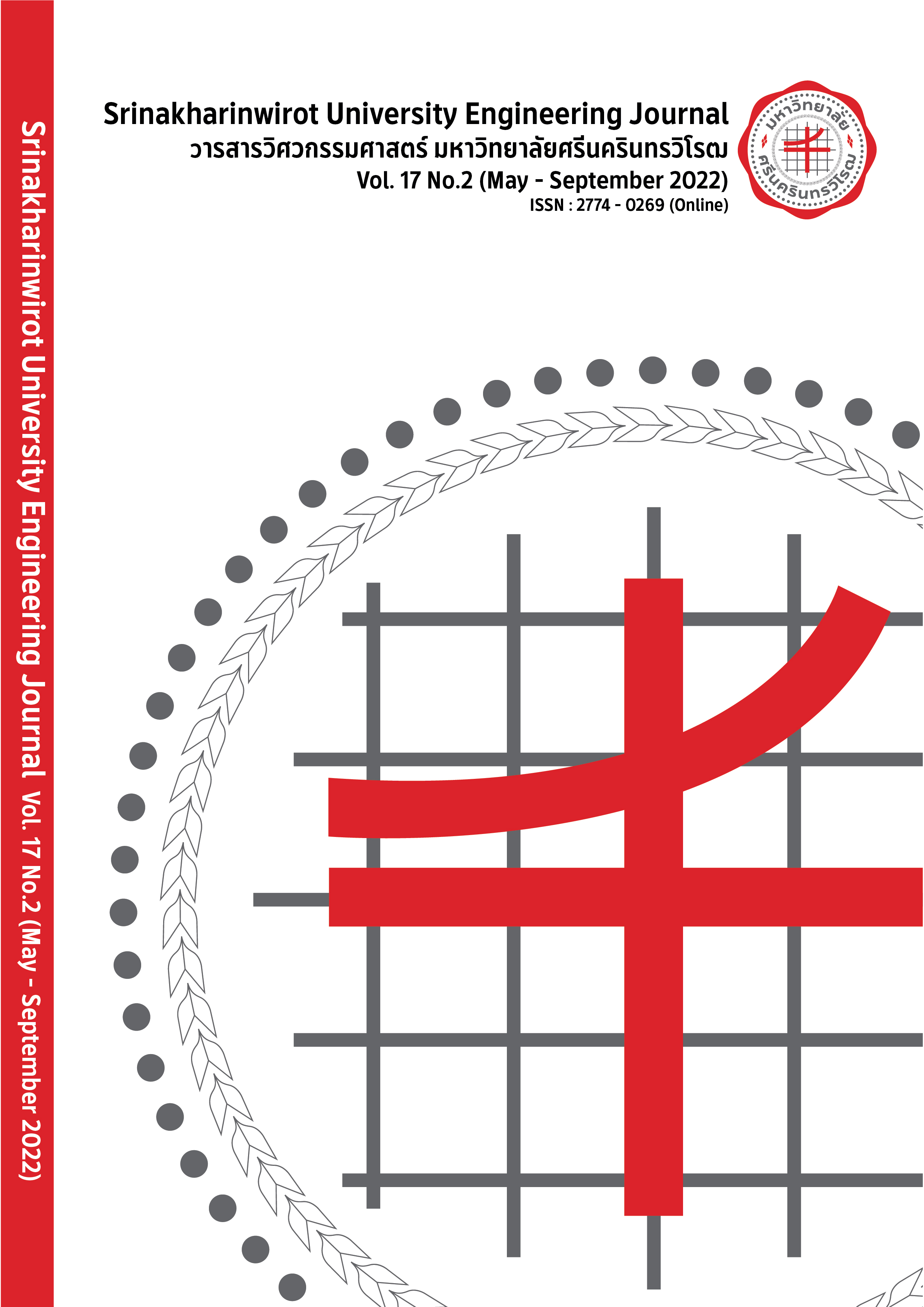A study on cause and value creation of variation order in construction project : Case study of a residential building project in Bangkok
Main Article Content
Abstract
The variation orders in construction projects often lead to cost overrun and project delay. However, it may create value to the project in various cases. This research aims to investigate causes of variation order as well as relationship between causes and project value creation. A high-rise residential building in Bangkok with the total of 401 variation orders is selected as a case study. Structure interview with questionnaire was conducted to identify cause and value creation of variation orders from the experts involved during project construction. Factor analysis revealed 7 groups of factors. Owner’s directive changes is the main cause of variation orders in the project. The study further found that regardless of the causes of variation orders, it gives the opportunity to add value to the project in terms of cost reduction, enhance safety, efficiency during operation and maintenance and also compliance to the law and regulations.
Article Details

This work is licensed under a Creative Commons Attribution-NonCommercial-NoDerivatives 4.0 International License.
Copyright belongs to Srinakharinwirot University Engineering Journal
References
J. I. Alzahrani and M. W. Emsley, “The impact of contractors’ attributes on construction project success: A post construction evaluation,” Int. J. Project Manage., vol. 31, no. 2, pp. 313–322, 2013.
F. M. Arain and L. S. Pheng, “Developers’ views of potential causes of variation orders for institutional buildings in Singapore,” Archit. Sci. Rev., vol. 49, no. 1, pp. 59–74, 2006.
J. L. Burati Jr, J. J. Farrington, and W. B. Ledbetter, “Causes of quality deviations in design and construction,” J. Constr. Eng. Manag., vol. 118, no. 1, pp. 34–49, 1992.
P. Klinchuanchun. (2021, March 18). Industry outlook 2021-2023 : Housing in upcountry (6 major provinces). [Online]. Available: https://www.krungsri.com/en/research/industry/industry-outlook/Real-Estate/housing-in-upcountry/IO/io-Housing-in-Upcountry-21.
Real Estate and Construction. (2021, Jun 1). Home purchases in Bangkok metropolitan area projected to contract for third consecutive year during 2021 (current issue no.3228). [Online]. Available: https://www.kasikornresearch.com/EN/analysis/k-econ/business/Pages/real-estate-z3228.aspx.
A. H. Memon, I. A. Rahman, M. F. Abul Hasan, “Significant Causes and Effects of Variation Orders in Construction Projects,” Journal of Applied Sciences Engineering and Technology, 2014, 4494-4502.
A.H. Al-Dubaisi, “Change Orders in Construction Project In Saudi Arabia,” M.S. thesis ,King Fahd University of Petroleum & Minerals, 2000, pp. 51-62.
L. O. Oyewobi, R. Jimoh, B. O. Ganiyu, and A. A. Shittu, “Analysis of causes and impact of variation order on educational building projects,” J. Facil. Manag., vol. 14, no. 2, pp. 139–164, 2016.
P. Keane, B. Sertyesilisik, and A. D. Ross, “Variations and change orders on construction projects,” J. leg. aff. dispute resolut. eng. constr., vol. 2, no. 2, pp. 89–96, 2010.
A. Enshassi, F. Arain, and S. Al-Raee, “Causes of variation orders in construction projects in the Gaza Strip,” J. Civ. Eng. Manag., vol. 16, no. 4, pp. 540–551, 2010.
A. A. Oladapo, “A quantitative assessment of the cost and time impact of variation orders on construction projects,” J. Eng. Des. Technol., vol. 5, no. 1, pp. 35–48, 2007.
F. Manzoor Arain and L. Sui Pheng, “The potential effects of variation orders on institutional building projects,” Facilities, vol. 23, no. 11/12, pp. 496–510, 2005.
Office of Government Commerce (OGC), Achieving excellence in construction, procurement guide 04 risk and value management, London, 2003.
D. C.-W. Ho et al., “A survey of the health and safety conditions of apartment buildings in Hong Kong,” Build. Environ., vol. 43, no. 5, pp. 764–775, 2008.
NASA, Report on sustainable design: design for maintainability and total building commissioning, National Aeronautics and Space Administration Facilities Engineering Division, USA, 2001.
Ş. Eryürük, F. Kürüm Varolgüneş, and S. Varolgüneş, “Assessment of stakeholder satisfaction as additive to improve building design quality: AHP-based approach,” J. Housing Built Environ., vol. 37, no. 1, pp. 505–528, 2022.
S. Adams, Practical Buildability. London, England: Construction Industry Research & Information Association, 1989.
J. H. K. Lai, “Building operation and maintenance: manpower in Hong Kong,” Facilities, vol. 35, no. 3/4, pp. 220–241, 2017.
H. Yan, H. Elzarka, C. Gao, F. Zhang, and W. Tang, “Critical success criteria for programs in China: Construction companies’ perspectives,” J. Manage. Eng., vol. 35, no. 1, p. 04018048, 2019.
H. F. Kaiser, “An index of factorial simplicity,” Psychometrika, vol. 39, no. 1, pp. 31–36, 1974.


